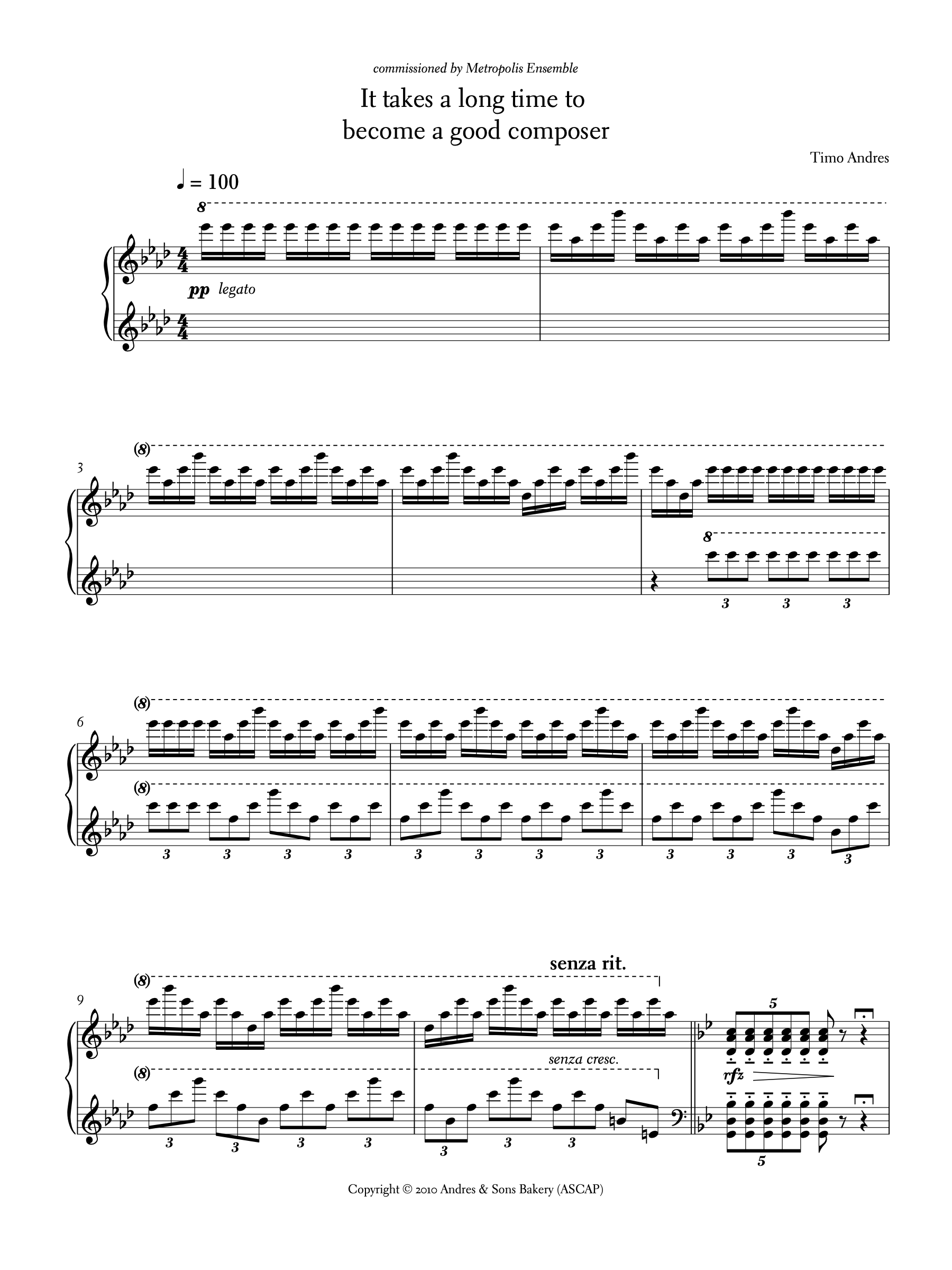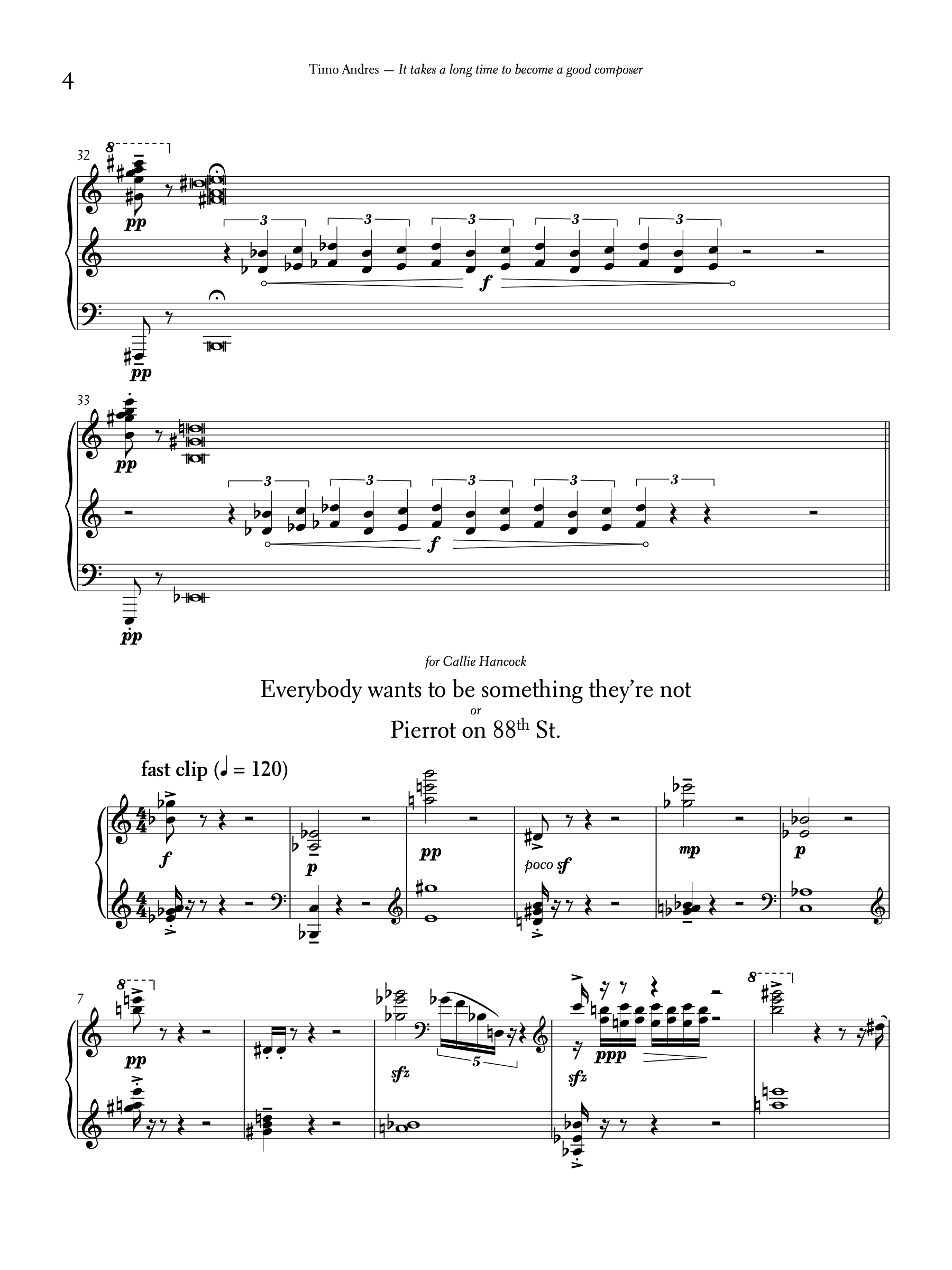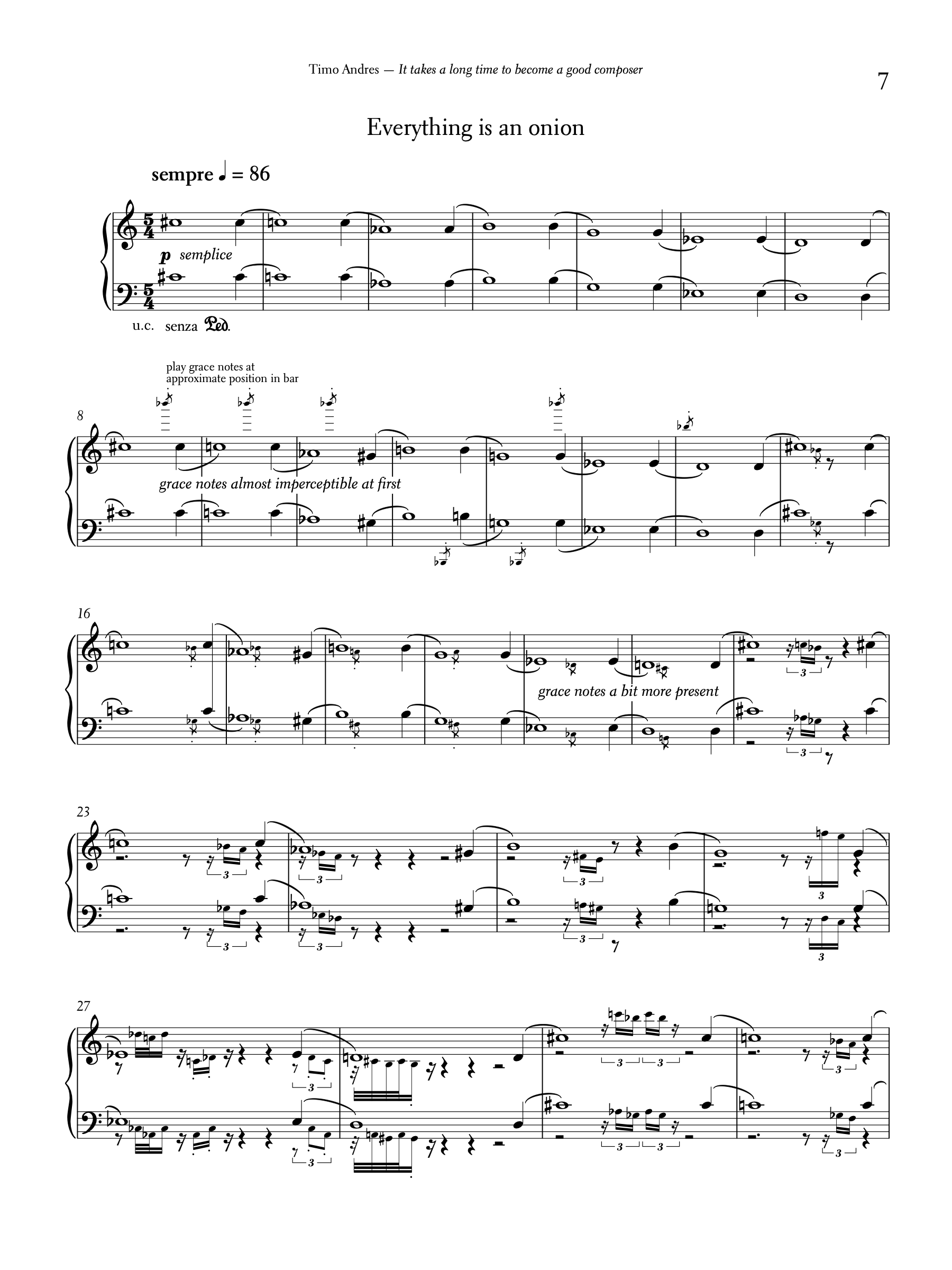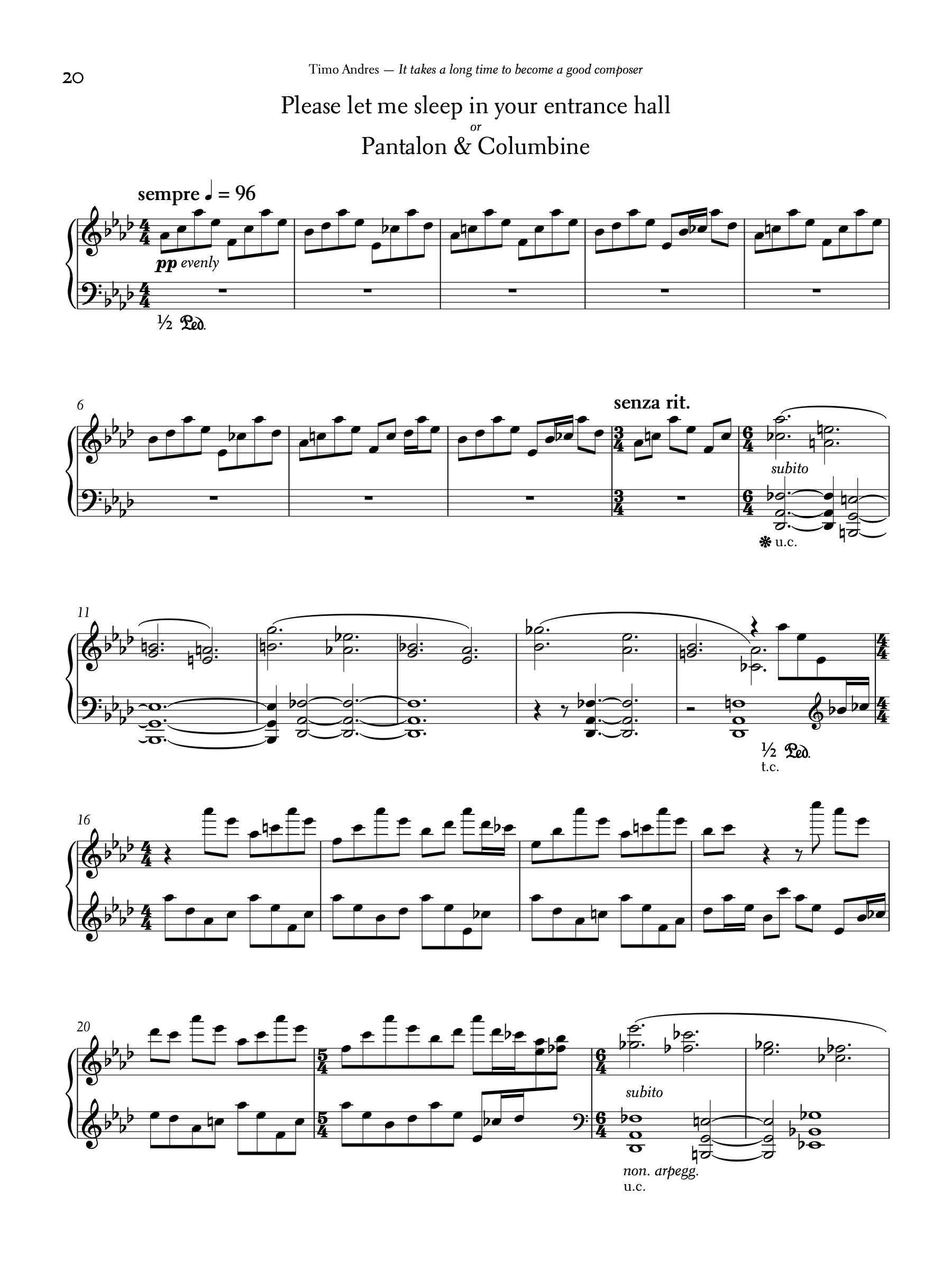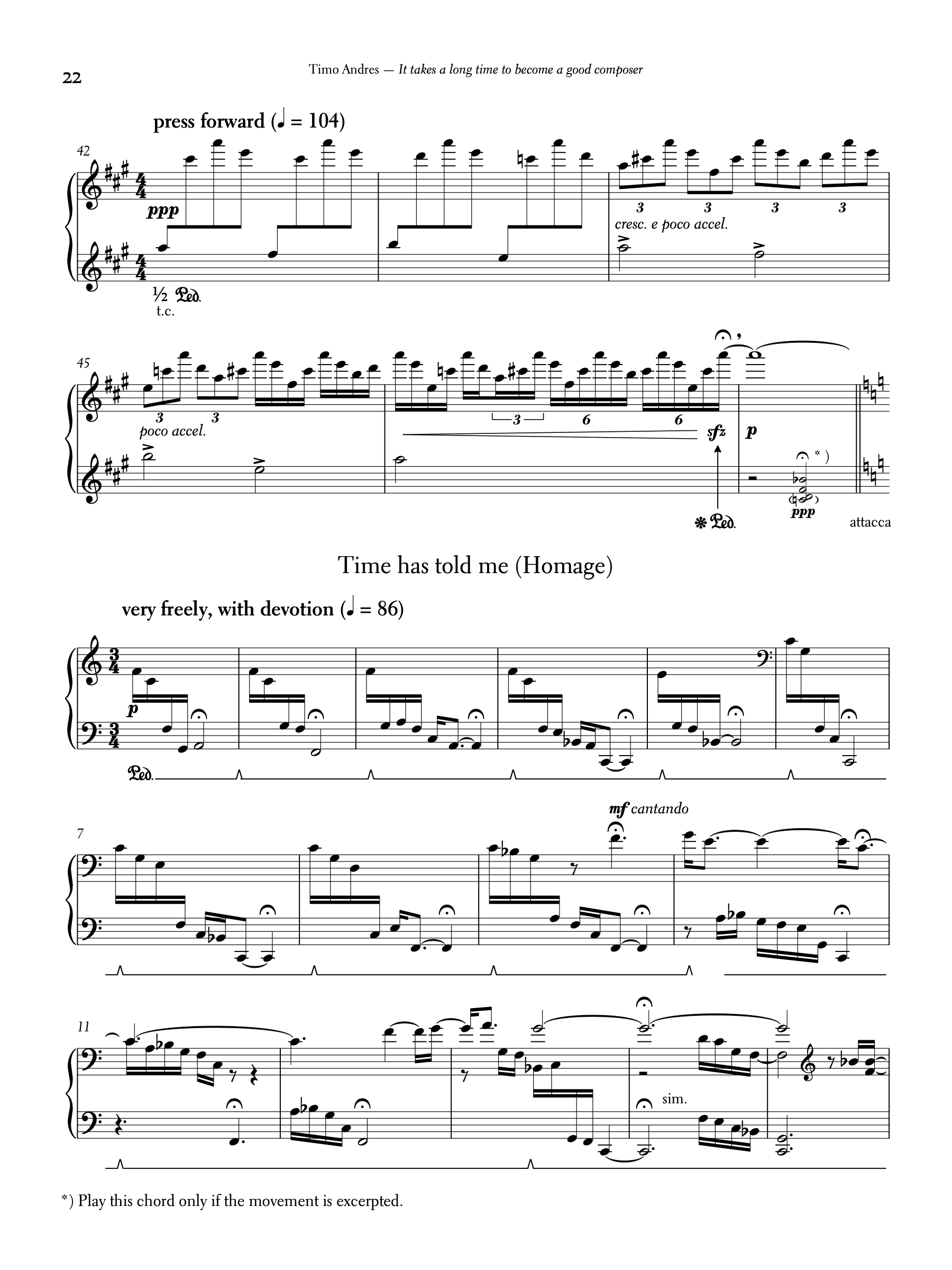Note
I’ve been working on Schumann’s Kreisleriana on and off for maybe the last five years, but never performed it. When Andrew [Cyr] asked me to start planning a solo piano concert that in some way incorporated my musical influences, my first thought was to go back to Schumann (it didn’t occur to me that it also happened to be his 200th birthday year).
Living with Kreisleriana, getting to know it on micro and macro levels, led me into the idea for a new companion piece, which I’m calling It take a long time to become a good composer. When people talk about Schumann, the common thing you hear is that he was an unparalleled miniaturist—that the two to four minute piano piece or lied was his pinnacle, and that when it came to writing sonatas and symphonies, better leave that up to Brahms. Kreisleriana, at face value, is a sequence of miniatures, but I’ve come to see it more as a fractal form; you ‘zoom out’ and start to hear larger units, you zoom out again and it resolves again, and then again and you hear the entire half hour. It works as well or better than any classical sonata.
Of particular interest to me is how he accomplished this with recurring material and alternation of musical moods. Schumann named the piece after E.T.A. Hoffman’s character Johannes Kreisler, who is ostensibly embodied in this alternation of moods, but you also don’t have to look very hard to see that it’s a self-portrait as well. You get very intellectual, rational music juxtaposed with Sturm und Drang. What I’m working on in It takes a long time… is building a similar musical structure, one that uses short timescales as building blocks for something bigger, but remains intimate rather than monumental.
Excerpt from an interview with Nate Bachhuber. Read the full text here.→
Listen
Timo Andres: It takes a long time to become a good composer
recorded live 5/29/12 at Le Poisson Rouge
performers Timo Andres, piano
Purchase
-
It takes a long time to become a good composer score, print edition
-
It takes a long time to become a good composer score, PDF edition
27 pages, 9×12 format.
